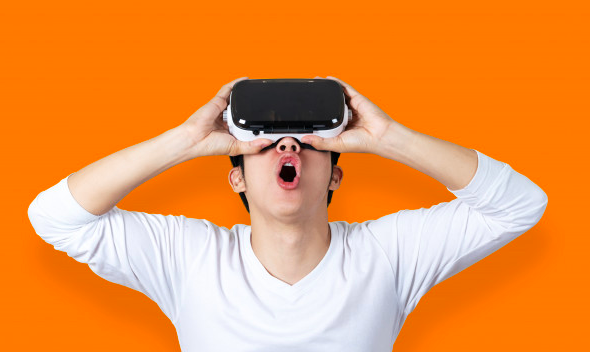Written by: Pallavi Kalla
Virtual Reality (VR) in the past was something of a whimsical idea, only thought to exist in Sci-Fi movies. However, today, virtual reality has started to become more accessible in the real world. Companies are implementing virtual reality in new creative ways, now more than ever.
Merrell, an outdoor footwear & apparel company, came up with a creative approach to implement virtual reality. The brand held a VR exhibition, in which they had people wear Oculus Rift headsets and walk along what Merrell called their Merrell Trailscape. People were put in a VR landscape of mountains and boulders, simulating a rigorous hiking experience with crumbling ledges and rickety wooden bridges, to help promote the company’s shoes. This experiment was Merrell’s first time using “walking around” virtual reality, which proved to be very intriguing for their audience.[1]
Other innovative methods that brands have employed the use of virtual reality: Six Flags debuted its first VR rollercoaster, in which riders wear Samsung Gear VR headsets on virtual fighter jets, offering consumers a unique experience.[2]
Marketing teams are not only utilizing virtual reality, but researchers have also found the technology as a new tool for qualitative research. Though focus groups are beneficial, we are just collecting information as the participants are sitting in the facility room. This is where VR comes into play, virtual reality can be used to understand the way customers behave when surrounded by the stimulus rather than just talking about it. The new technology allows participants it interact and respond to stimuli in a whole new light
Ethnographic research is another way that virtual reality has impacted market research. Ethnographic research is often costly, timely, and can feel intrusive to participants – as groups are typically conducted at a participant’s home or when they are shopping at a store. VR eliminates these barriers having the people interact in a virtual home or buy through a virtual store with a VR headset, and this way researchers can be capturing the person’s experience and insights in real time. Virtual reality will help researchers understand the consumer journey better without actually having the shopper gong to the physical store.
Though virtual reality is still in the early stages, it looks like it is here to stay. Regarded as a useful market research device, with its endless new imaginative concept’s companies can create. VR has not only advanced and upped the way companies promote products but has helped market researchers in progressive and forward thinking when conducting qualitative research.
[1]“Merrell Thrills and Frightens People with a Crazy Oculus Rift Mountainside Hike,” Adweek. February 2015. www.adweek.com/creativity/merrell-thrills-and-frightens-people-crazy-oculus-rift-mountainside-hike-162831/.
[2]“20 Innovative Ways Companies Are Using Virtual Reality,” Inc.com. October 2016. www.inc.com/ryan-jenkins/20-innovative-ways-companies-are-using-virtual-reality.html.
[/kc_column_text][/kc_column][/kc_row]









